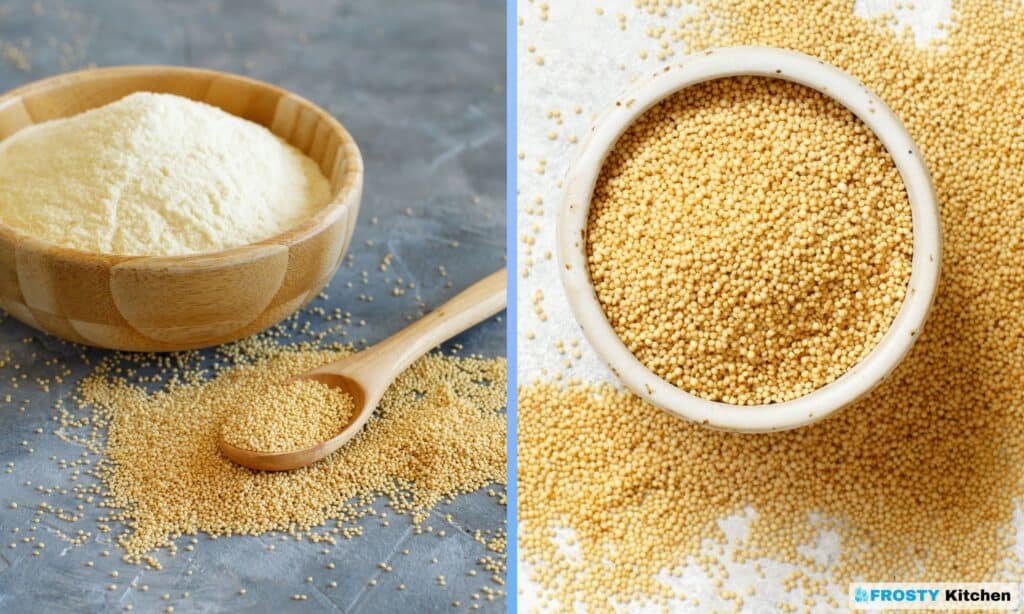In the world of culinary adventures, the essence of ingredients plays a pivotal role. When it comes to amaranth seeds, the tale is no different. Their nutrient-rich profile and unique taste make them a cherished component in many dishes. Your journey towards preserving the wholesomeness of amaranth seeds begins here, with a guide that seeks to empower your kitchen endeavors with well-preserved seeds, ready to spring into action whenever needed.
Amaranth Seeds, often regarded as a ‘superfood’, have a rich history of nourishing civilizations with their protein-rich profile and a plethora of other vital nutrients. With a slightly nutty and earthy flavor, these seeds are a delightful addition to a variety of recipes.
The voyage into the depths of this guide aims to unravel the steps to proficiently freeze amaranth seeds, ensuring their nutritional brilliance is locked in for your future culinary creations. So, proceed and unlock the secrets to freezing amaranth seeds, making them a readily available asset in your kitchen.
What are Amaranth Seeds?
Amaranth seeds are the tiny seeds of the Amaranth plant, known for their high nutritional value and versatility in culinary applications.
Origin and History
- Amaranth seeds have been a part of the human diet for thousands of years, especially revered in ancient Aztec and Incan civilizations for their nutritional benefits and healing properties.
- Their journey across different cultures has cemented their place in both traditional and modern kitchens, showcasing their timeless nutritional and culinary appeal.
Nutritional Value
- Amaranth seeds are a protein powerhouse, providing a complete protein with all essential amino acids. They also boast a good amount of fiber, vitamins, and minerals like magnesium, iron, and phosphorus.
- The seeds are also known for their antioxidant properties, which play a crucial role in promoting overall health and well-being.
Benefits of Freezing Amaranth Seeds
- Nutrient Retention: Freezing amaranth seeds helps preserve their nutritional essence, ensuring you have a healthful ingredient ready at hand.
- Extended Shelf-Life: Through freezing, the shelf-life of amaranth seeds is significantly extended, providing a longer window for their usage.
- Convenience: Having a stash of frozen amaranth seeds simplifies the cooking process, making them a convenient addition to your meals.

Preparing Amaranth Seeds for Freezing
- Packaging: Storing amaranth seeds in airtight containers or vacuum-sealed bags is crucial to prevent moisture ingress or freezer burn.
- Portioning: Dividing the seeds into usable portions facilitates easy use and minimizes the risk of waste.
Step-by-Step Guide to Freezing Amaranth Seeds
Preserving the nutritional treasure of amaranth seeds through freezing is a journey worth undertaking. The methods outlined below are tailored to ensure a successful freezing endeavor.
Method 1: Freezing Whole Amaranth Seeds
- Preparation: Ensure the seeds are clean and dry.
- Storage: Transfer the seeds to airtight containers or vacuum-sealed bags.
- Freezing: Place the containers in the freezer, ensuring they lay flat for uniform freezing.
Method 2: Freezing Ground Amaranth Seeds
- Preparation: Grinding the seeds to your desired consistency, if you prefer using ground amaranth seeds.
- Storage: Store the ground seeds in airtight containers or vacuum-sealed bags.
- Freezing: Lay them flat in the freezer for uniform freezing.
Refreezing Amaranth Seeds
Refreezing amaranth seeds may lead to a decline in their nutritional and flavor profile. It’s advisable to avoid refreezing and instead, portion the seeds adequately before the initial freezing.
Moreover, refreezing might introduce moisture, which could lead to spoilage or degradation in quality. Adequate portioning before freezing is a prudent approach to avoid the need for refreezing.
Storage Duration and Factors Affecting it
- Duration: Frozen amaranth seeds can retain their quality for up to 6 months, provided they are stored under optimal conditions.
- Storage Containers: Utilizing airtight containers or vacuum-sealed bags is pivotal in preserving the quality and extending the shelf-life of amaranth seeds.
- Factors: The freshness of the seeds at the time of freezing, the method of freezing, and the consistency of the freezing temperature significantly influence the storage duration.
Frequently Asked Questions
Q1: Can I use frozen amaranth seeds directly in cooking?
- Yes, frozen amaranth seeds can be used directly in cooking without the need for thawing. Their small size allows for quick thawing during the cooking process, retaining their nutritional value and flavor.
- The ease of use associated with frozen amaranth seeds simplifies meal preparation, making them a convenient ingredient for health-conscious individuals.
Q2: How can I ensure the maximum shelf-life of frozen amaranth seeds?
- Ensuring an airtight seal on the storage container or bag is crucial to prevent any air or moisture from entering, which could degrade the quality of amaranth seeds over time.
- Additionally, maintaining a consistent freezing temperature and avoiding frequent temperature fluctuations significantly contribute to extending the shelf-life of frozen amaranth seeds.
Q3: Is it advisable to grind amaranth seeds before freezing?
- The choice to grind amaranth seeds before freezing is a personal preference based on culinary needs. However, it’s important to note that whole amaranth seeds may retain their nutritional value better compared to ground ones.
- If you opt to freeze ground amaranth seeds, ensure they are stored in airtight, freezer-safe containers to minimize exposure to air and other elements.

